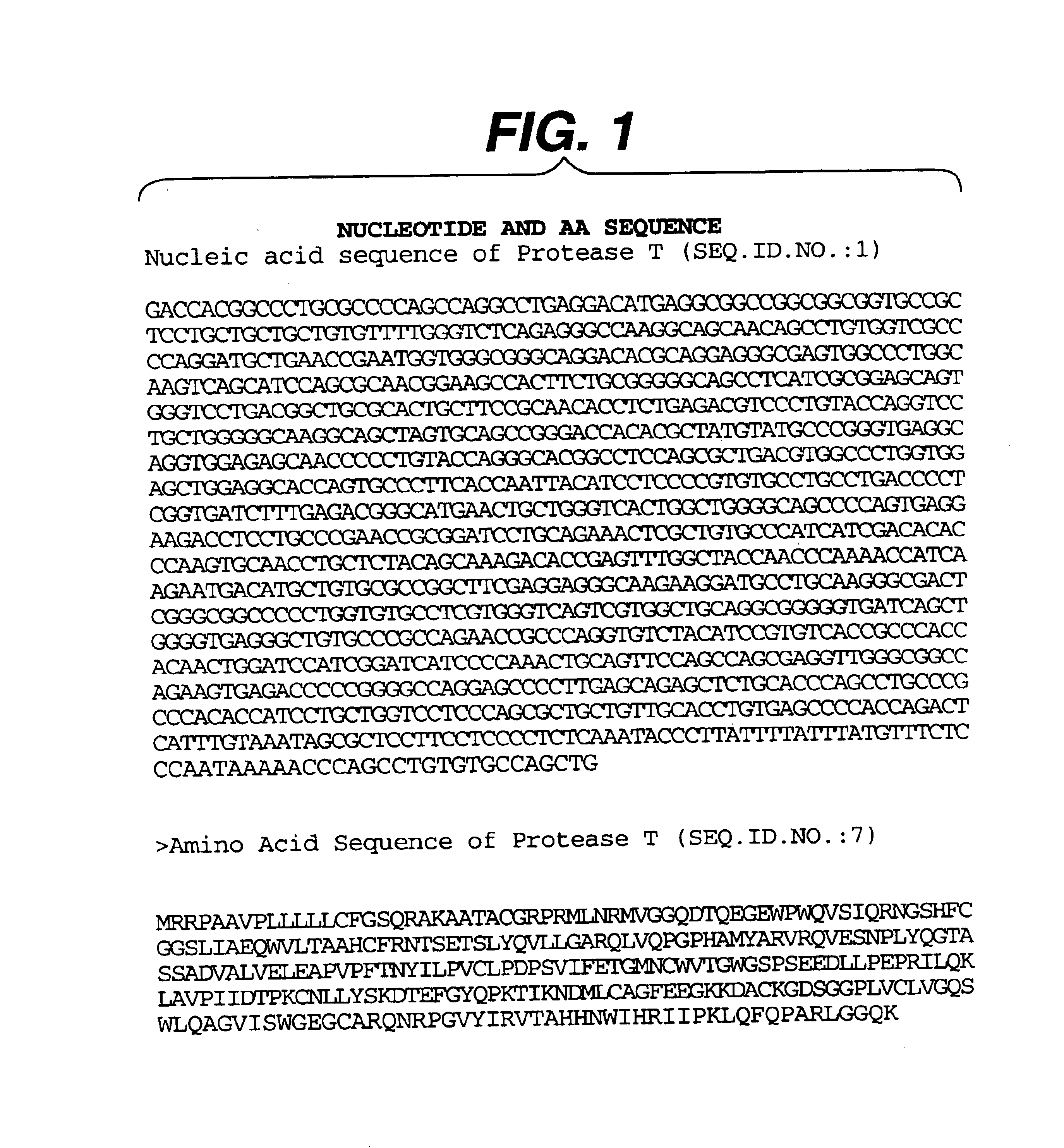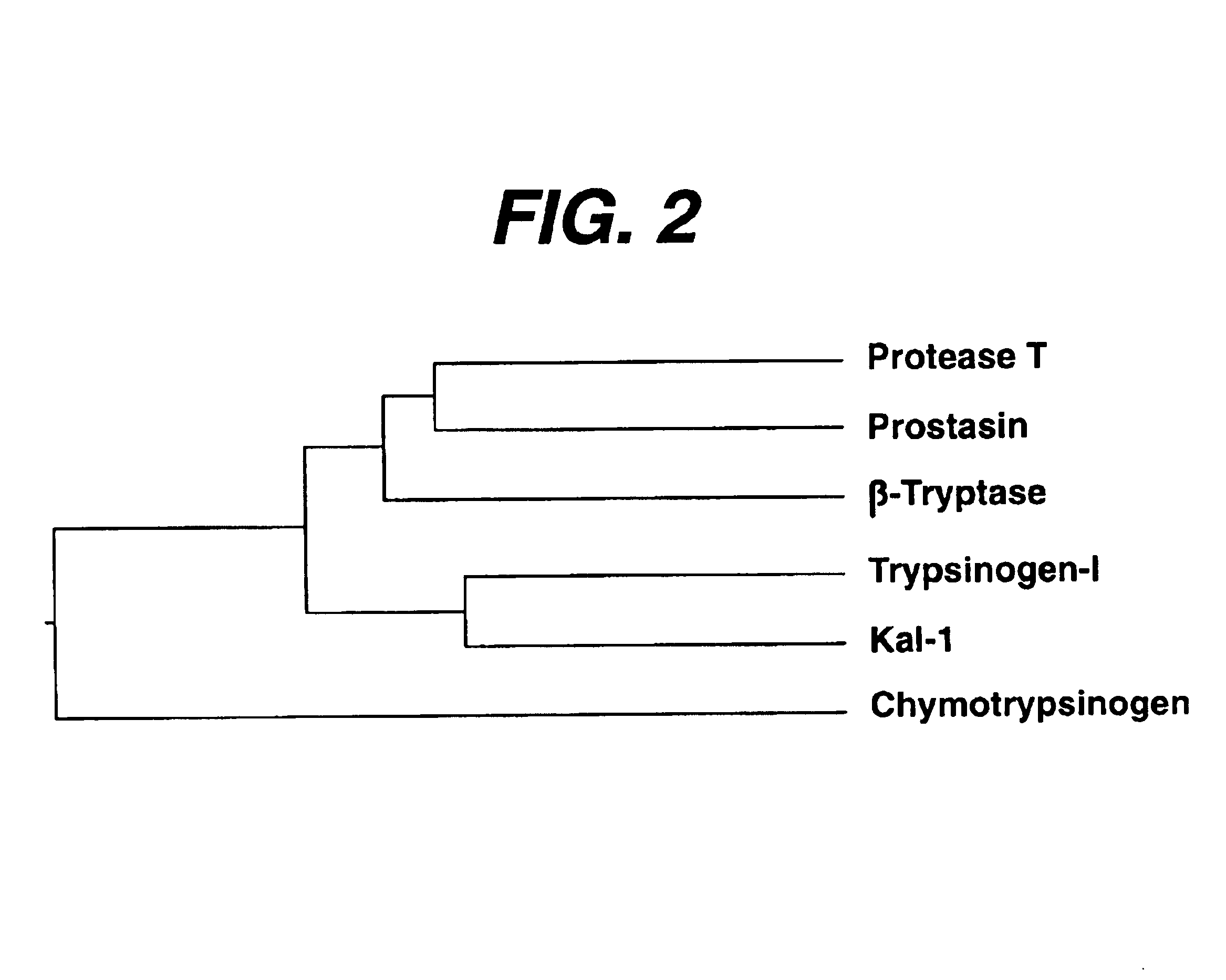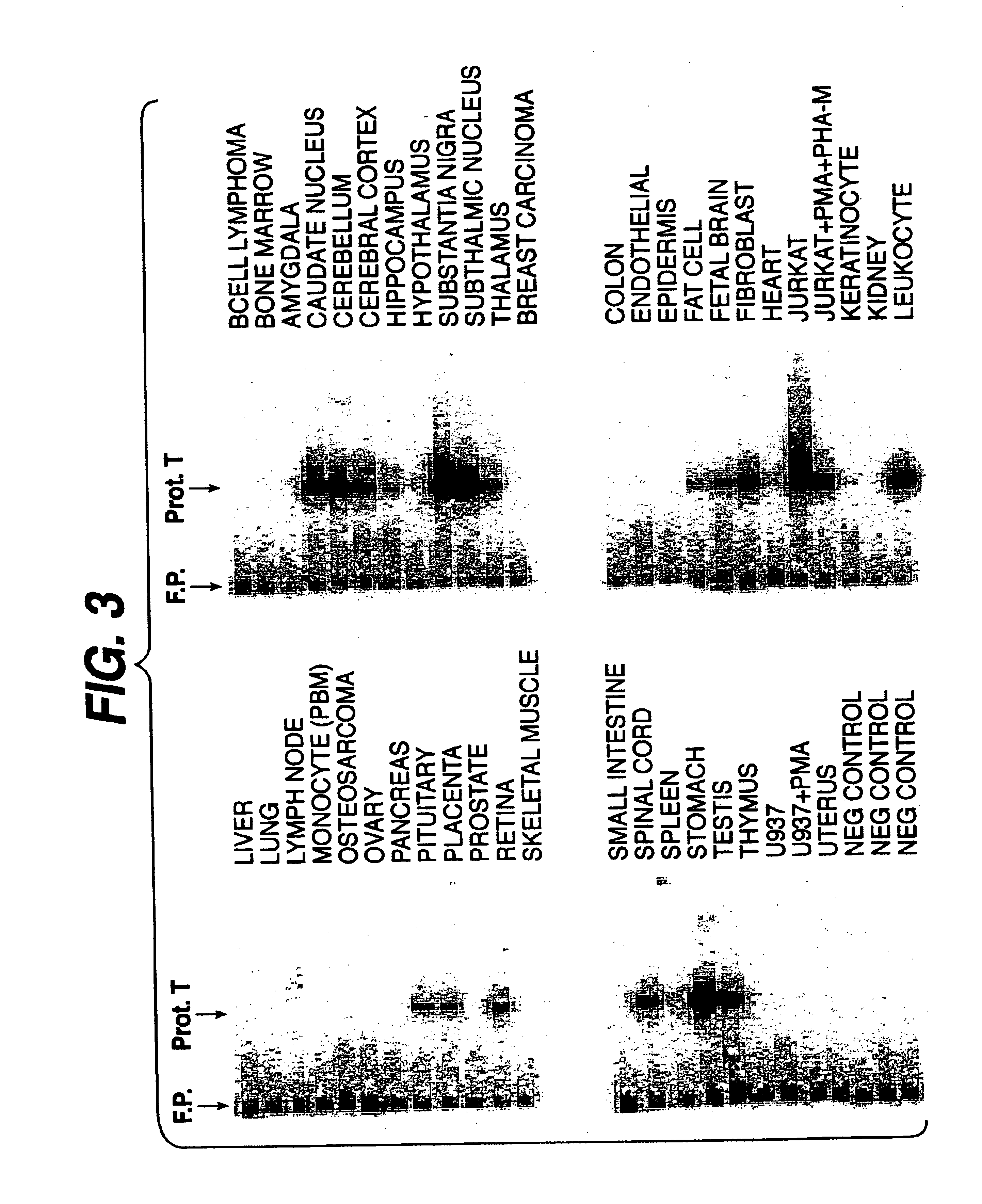DNA encoding the human serine protease T
a serine protease and coding technology, applied in the field of dna encoding the human serine protease t, can solve the problems of reducing efficiency in a non-natural environment, limited use of some proteases,
- Summary
- Abstract
- Description
- Claims
- Application Information
AI Technical Summary
Benefits of technology
Problems solved by technology
Method used
Image
Examples
example 1
Plasmid Manipulations
[0131]All molecular biological methods were in accordance with those previously described (Maniatis et al. (1989). 1-1626). Oligonucleotides were purchased from Ransom Hill Biosciences (Ransom Hill, Calif.) and all restriction endonucleases and other DNA modifying enzymes were from New England Biolabs (Beverly, Mass.) unless otherwise specified. The protease T expression construct was made in the Drosophila inducible expression vector pRM64, featuring a constitutive actin promoter as described below. The Drosophila expression vectors used are similar to those commercially available (Invitrogen, San Diego, Calif.). All construct manipulations were confirmed by dye terminator cycle sequencing using Allied Biosystems 377 fluorescent sequencers (Perkin Elmer, Foster City, Calif.).
Acquisition of Protease T cDNA
[0132]Library was constructed using 2 micrograms of polyA RNA isolated from esophageal tissue removed from a 53-year-old Caucasian male during a partial esopha...
example 2
Tissue Distribution of Protease T mRNA
[0133]We employed a highly sensitive PCR profiling technique to identify the tissue distribution of protease T mRNA. For this application, human cDNA libraries were from Clontech, (Palo Alto, Calif.). The PCR primers for the profiling analysis were as follows:
SEQ.ID.NO.:2: ProtT PCRTP-U 5′-GCCAGGCCTGAGGACATGAG-3′
SEQ.ID.NO.:3: ProtT PCRTP-L 5′-TGCGCTGGATGCTGACTTGC-3′
[0134]The 50 μl PCR reactions used 1 μl of diluted phage stock (˜108 to 1010 pfu / ml) from each of the cDNA libraries tested. Reactions were initially denatured at 94° C. for 5 minutes and subjected to 35 cycles of 94° C. for 20 seconds; 56° C. for 20 seconds; and then 72° C. for 30 seconds followed by a final 72° C. elongation for 10 minutes A nested primer probe of the sequence
SEQ.ID.NO.:4: ProtT PCRTP-PP 5′-CCAGGATGCTGAACCGAATGGTGGGCGGGCAGGACACGCA-3
was radiolabeled using gamma 32P-ATP and T4 polynucleotide kinase (Life Technologies, Gaithersberg, Md.) and unincorporated label was re...
example 3
Construct Generation for the Expression of Active Protease T
[0136]Since members of the S1 protease family are most often synthesized as inactive zymogen precursors, and require limited proteolysis to become proteolytically active, we have developed a zymogen activation construct to express and permit the generic activation of heterologous serine protease cDNAs. This construct features a bovine preprolactin signal sequence fused in-frame with the MoAb M2 anti-FLAG antibody epitope as previously described (Ishii et al. (1 993). J. Biol. Chem. 268:9780-6) for the purposes of secretion and antibody detection respectively (PF). Significantly, this construct also contains the enterokinase cleavage site from human trypsinogen I (EK) fused in-frame and downstream from the signal sequence. At the C-terminus, preceding a stop codon, are additional sequences encoding 6 histidine (6XHIS) codons for affinity purification on nickel resins respectively. A unique Xba I restriction enzyme site, imme...
PUM
 Login to View More
Login to View More Abstract
Description
Claims
Application Information
 Login to View More
Login to View More - R&D
- Intellectual Property
- Life Sciences
- Materials
- Tech Scout
- Unparalleled Data Quality
- Higher Quality Content
- 60% Fewer Hallucinations
Browse by: Latest US Patents, China's latest patents, Technical Efficacy Thesaurus, Application Domain, Technology Topic, Popular Technical Reports.
© 2025 PatSnap. All rights reserved.Legal|Privacy policy|Modern Slavery Act Transparency Statement|Sitemap|About US| Contact US: help@patsnap.com



